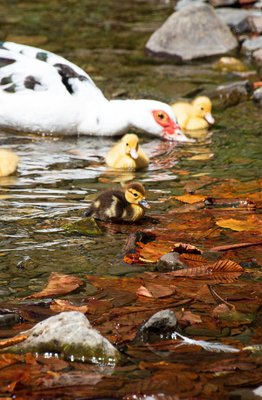Deep in northern Spain's Cantabrian Mountains, limestone peaks rise above green valleys where red deer roam. Hiking trails wind through this vast park, home to golden eagles and rare chamois.
Picos de Europa National Park extends across northern Spain's Asturias, Cantabria, and León regions. The limestone mountains reach 2,648 meters at Torre Cerredo peak, forming deep gorges, glacial lakes, and extensive cave systems. Walk through the 12-kilometer Cares Gorge trail carved into cliff faces, explore the medieval streets of Bulnes village, or ascend in the Fuente Dé cable car for views across three mountain ranges.
Geography and Layout
Three limestone massifs make up the park, divided by rivers. The Western Massif (Cornión) sits between the Sella and Cares rivers and contains the Lakes of Covadonga. In the Central Massif (Urrieles), you'll find the park's highest peaks, including Torre Cerredo and the distinctive Naranjo de Bulnes. The Eastern Massif (Ándara) reaches 2,444 meters at Morra de Lechugales peak, with 19th-century mining ruins scattered throughout its slopes.
Getting There and When to Visit
You can fly into Santander (SDR), Asturias (OVD), or Bilbao (BIO) airports. The most stable weather occurs from May through October, with July and August drawing the largest crowds. The Atlantic Ocean influences the climate - expect temperature changes of 10-15°C within hours and sudden fog banks even during summer days.
Essential Hiking Routes
The Cares Gorge trail runs 12 kilometers through a limestone canyon from Poncebos to Caín. You'll walk on a path cut into the cliff faces, maintaining a steady elevation throughout the 4-5 hour journey. Around the Lakes of Covadonga, follow the circuit past glacial lakes Enol and Ercina - on clear days, you can see the Bay of Biscay. The Fuente Dé cable car takes you up 753 meters in 4 minutes to access high-altitude trails in the Central Massif.
Mountain Villages
You can reach Bulnes only by foot or funicular railway from Poncebos. At 1,050 meters, Sotres is the park's highest village and makes a good starting point for hikes and climbs. Just outside the park, Potes serves as the main access point to the Liébana Valley, with its 14th-century tower and stone bridges from the 13th century.
Wildlife and Vegetation
Look for Cantabrian brown bears and Iberian wolves - both endangered species live in the park. Cantabrian chamois climb the rocky peaks while golden eagles and griffon vultures circle above. Beech forests grow on the slopes below the rocky summits, giving way to oak woods and meadows at lower elevations.
Local Food
Several protected-designation cheeses come from this region. Cabrales cheese ages in limestone caves, where specific mold cultures create its blue veins and strong flavor. Cheesemakers smoke Gamoneu - made from cow's, goat's, and sheep's milk - before aging it in caves. Try Asturian fabada in mountain restaurants - it's a rich stew of white beans and pork.
Practical Information
You can enter the park for free. Get maps and information at three visitor centers: Pedro Pidal in Cangas de Onís, Sotama in Tama, and Casa Dago in Posada de Valdeón. You can only camp in designated areas, though you may bivouac above 1,600 meters from one hour before sunset until one hour after sunrise.


















